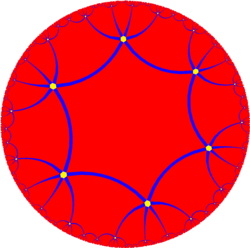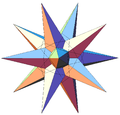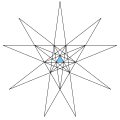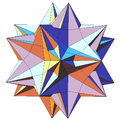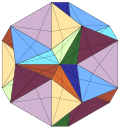| Excavated dodecahedron | |
|---|---|
 (see 3D model) | |
| Type | Stellation |
| Index | W 28, 26/59 |
| Elements (As a star polyhedron) | F = 20, E = 60 V = 20 (χ = −20) |
| Faces |  Star hexagon(Tripod) |
| Vertex figure | 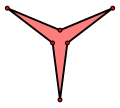 Concave hexagon |
| Stellation diagram |  |
| Symmetry group | icosahedral (Ih) |
| Dual polyhedron | self |
| Properties | noble polyhedron, vertex transitive, self-dual polyhedron |
In geometry, the excavated dodecahedron is a star polyhedron that looks like a dodecahedron with concave pentagonal pyramids in place of its faces. Its exterior surface represents the Ef1g1 stellation of the icosahedron. It appears in Magnus Wenninger's book Polyhedron Models as model 28, the third stellation of icosahedron.







